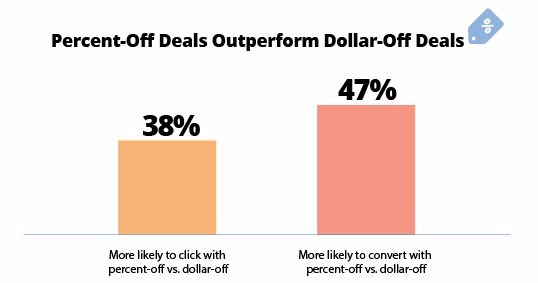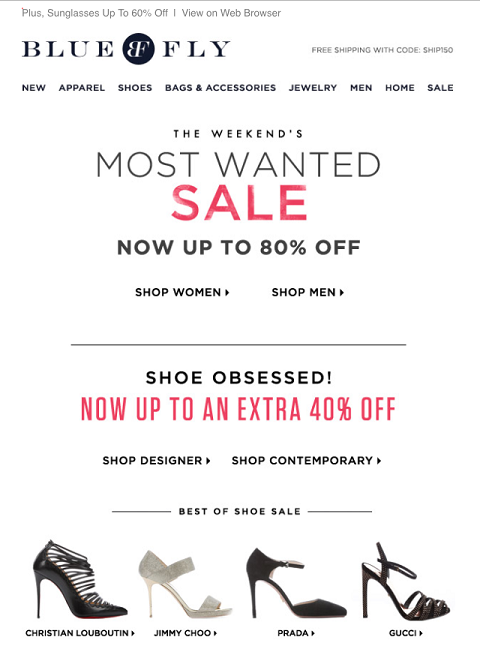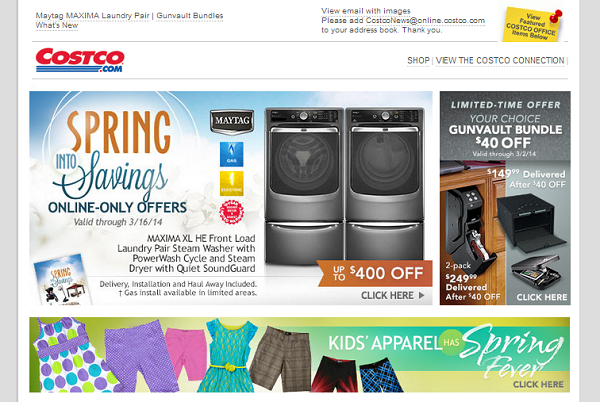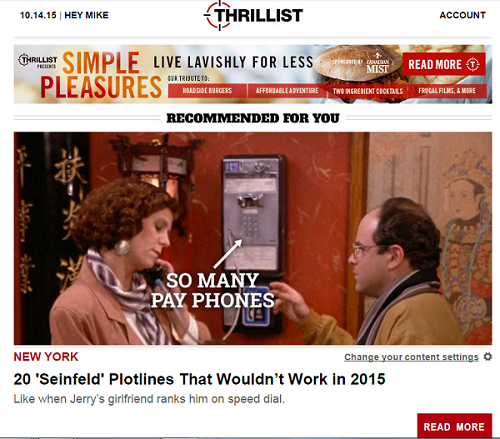How to construct the perfect marketing email
"Perfect" is subjective, but new data shows the optimal number of words in a subject header and what kind of language to use in a promotion, among other traits that make the ideal email.
"Perfect" is subjective, but new data shows the optimal number of words in a subject header and what kind of language to use in a promotion, among other traits that make the ideal email.
Because so many things go into marketing emails – when to send them, how often to send them, what to write, what to highlight – how do you make one perfect?
Though it’s a subjective question, Retention Science, a retention marketing company from Los Angeles, did research in order to quantify email traits, such as exactly how many words a subject line should be (six to 10) and which month sees the most conversions (surprisingly not December).
Retention Science analyzed more than 1 billion emails over a period of two years. The subjects ran the gamut, from brick-and-mortar businesses to companies like Dollar Shave Club, which is known for being techie and innovative. In addition, the marketers represented a wide cross-section of business sizes and verticals.
Want to craft the perfect email that your subscribers will like enough to open and engage with? Here’s a breakdown of Retention Science’s research in sections.
Marketing emails are all about inspiring a customer to take action quickly so naturally, promotions are a staple.
Dollar-off savings may seem like the way to go, eliminating the need for math, but Retention Science found otherwise.
According to the data, people are 38 percent more likely to click – and 47 percent more likely to convert – when they’re presented with a percent-off offer.
“To me, as a customer, I’m much more attracted to dollar amount because it’s very clear how much that is worth to me. When you say 30 percent, I don’t know how much I’m going to spend so it’s not as specific. I found that pretty surprising,” says Jerry Jao, founder and chief executive (CEO) of Retention Science.

That was the finding most surprising to Jao (and me), but if you really think about it, percent off just sounds like more.
Look at this email from Bluefly. These expensive designer shoes are up to 40 percent off, which is close enough to 50 that it’s easy to think, “Oh, I can get Christian Louboutins for almost half off!” But if a retailer presents dollar increments, your brain is probably more likely to think in dollar increments. “This pair of shoes is $400 off… but they’re still $600. That’s… a lot.”

Retention Science’s research confirmed what everyone has been saying: the best subject lines are short and sweet – but not too short.
Subjects with five words or less are generally opened 16 percent of the time, while those with six to 10 words have an open rate of 21 percent.
That’s the highest, with each additional word correlating with a decrease in open rate. For Jao, this was his least surprising find.
“It’s common sense, but of course, it’s really nice to have data to back it up,” he says. “All of us are getting a crazy amount of emails so the shorter you are, the more concise you are and the more straight to the point you are, the more likely you will be to get some attention.”
Around subject lines, the study found that punctuation also impacts open rates. They increased 9 percent with the presence of any punctuation, particularly question marks. Subject lines that ask questions have 44 percent higher open rates than those with exclamation points.
Chris Donald, CEO of Dallas email marketing agency Inbox Group, is just as unsurprised as Jao at these statistics, calling subject lines “the clickbait of email.”
He names Spirit Airlines as one brand in particular that does this well, grabbing users’ attention with witty, sometimes provocative subjects.

It’s no surprise that open rates are highest during the beginning of the holiday season, peaking at 30 percent in October and staying at 27 percent through November. When it comes to conversions, both months are trumped by December, which has conversion rates 10 percent higher than the average.
However, what may be surprising is that December only has the second-highest conversion rates.
In first place is actually July, a month with conversion rates 21 percent above average. Fourth of July sales may be a factor, though it may be the case of, “When bad times happen is when you know who your true friends are.” Summer is notoriously slow for retailers, so perhaps the July shoppers are tried-and-true loyal customers. After all, doesn’t everyone shop during the holiday season?
July’s high conversions are particularly impressive once you factor in that summer is when email subscriptions are hit the hardest. According to Retention Science, November and December see the lowest (4 and 5 percent, respectively) unsubscribe rates, which again, makes sense, given how many people are searching for deals. On the flip side, August sees the highest unsubscribe rate by far, at 28 percent.
Donald points out that these are averages, not hard-and-fast rules. Just because unsubscribe rates are higher during the summer months doesn’t mean you should put less efforts into your email marketing in August than you do in November.
“If you sell waverunners, January and February may not be big months for you, but in the summertime, you kick ass. For someone else who sells winter coats, January or February are great,” says Donald. “Averages are just that: it’s average information. You want targeted, useful information that ties into what your business does or sells.”
The perfect email is highly visual and personalized, with clear calls to action. For the latter, Donald recommends as many as possible, with at least one above the fold. He cites Costco as an example.
“Costco has the biggest, craziest emails I’ve ever seen and they kick ass for that,” he says. “There are times when there are literally 50 different products in the email, but [Costco is] sort of like the bulk local Amazon where you can get everything from carrots to patio furniture to tires.
They sell everything, so one of those products is bound to get [a consumer’s] attention.
“I can’t believe that if it’s not working well, they keep doing it,” adds Donald.

Visual content marketing often comes down to “less is more” because with too many options, people won’t know where to focus their eye or their attention, and lose interest. But it is possible to have several call to actions without being visually overwhelming, as long as the email looks clean.
High-quality photographs make Costco’s emails more appealing. Jao points out that if you do a product shot on a white background, make sure it is completely white because the background of your email most likely is.
On a white-but-not-perfectly-white background, your product won’t blend in as seamlessly and may look dirty by comparison.
Personalization is another no-brainer, both in the subject line and the body. People are inundated with so many emails every day that those lacking customized relevance simply won’t receive as much attention. Plus, as Experian Marketing Services found last year, personalized emails yield transaction rates that are six times higher.
“If you work so hard to get this person to finally open your email and when they do, there’s some boring irrelevant content, you just wasted a bullet on someone,” says Jao. “Not being able to establish a relationship with customers in this day, you will lose your customers very quickly. It might not happen overnight, but if you keep sharing information that people don’t care about, in a month or two, they will leave you and unsubscribe.”
By appealing to people, personalized emails are also just going to get opened faster. A recent email subject recommend an article about Seinfeld plotlines that have been rendered obsolete by modern technology.
I played right into Thrillist‘s trap, and stopped what I was doing to read it immediately. And then I engaged with the content by going to the comments to point out the glaring omission that was the episode where the gang kept missing each other at the movie theater.

Here are seven takeaways, each of which is six to 10 words, just like the ideal email subject line.